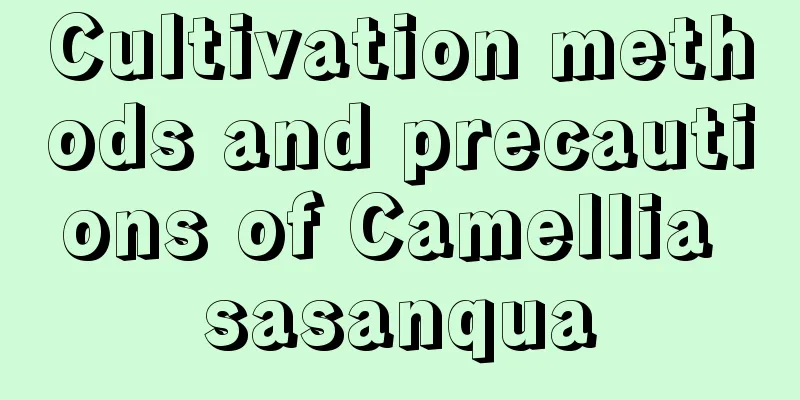Cultivation methods and precautions of Camellia sasanqua

Farming methodsilluminationCamellia sasanqua prefers shade by nature, so it grows best in a semi-shade and semi-sun environment. Strong summer sunlight may burn its leaves and buds, causing them to curl and fall off, but proper light is needed to encourage the flowers to bloom and bloom profusely. soilCamellia sasanqua is suitable for growing in loose, fertile, well-drained acidic sandy soil. Alkaline soil and clay are not suitable for growing Camellia sasanqua. The best soil is humus-rich, moist, slightly acidic soil with a pH value of 5.5-6. temperatureCamellia sasanqua is cold-resistant, but if planted in pots, the temperature should generally not be lower than -2℃. The most suitable growth temperature is 18℃-25℃. WateringWatering must be thorough. In summer, water once in the morning and evening every day, and in winter, water once every few days. Except in winter, you should also spray water on the leaves every few days to keep the leaves clean. FertilizationIt is suitable to apply light fertilizer to Camellia sasanqua, especially in the seedling stage. Generally, human urine can be applied once or twice in February and March to promote the growth of branches and leaves; cake fertilizer water can be applied once in April and May to promote the differentiation of flower buds; phosphorus fertilizer can be applied once in September and October to promote good flowering and also help it survive the winter. Matters Needing Attention in Planting Camellia SasanquaShade in midsummerIn midsummer, the camellia sasanqua needs to be shaded and avoided from strong sunlight at noon. It can be exposed to more sunlight in the morning and evening, which is beneficial to the differentiation and development of flower buds. Stay warm in winterIn winter, the camellia sasanqua should be moved indoors for the winter, and can be kept under a shade in other seasons. The room temperature should not exceed 7℃ in winter, and is best between 3℃ and 6℃. The potting soil should be suitableFor potted camellia, it is best to choose a loose, fertile, well-drained, slightly acidic culture soil. In the north, it is suitable to use culture soil made mainly of leaf mold or peat soil. |
Recommend
How to cultivate chickweed
1. Maintenance methods 1. Temperature: As can be ...
Environmental conditions and characteristics of wormwood growth
Environmental conditions and requirements for the...
Feng Shui Effects of Gerbera
Gerbera can promote women's love Feng Shui of...
How to prune roses when they are lush and leafy
Pruning of roses during the growing season When g...
Just do this and the flowers will bloom for half a year and easily become flower balls
Apply this to the flowers and they will bloom eas...
The function and value of avocado
Edible value of avocado Avocado is rich in nutrie...
Chrysanthemum fertilization method, what fertilizer to use
1. Fertilization time Chrysanthemum has relativel...
Will the Geely Red flower?
Lucky red is a common foliage plant, but if it is...
How to cultivate white palm
Anthurium, also known as smooth sailing or white ...
How to prune summer jasmine
When to prune summer jasmine Jasmine can generall...
The role of Xiandan flower
The ornamental value of Ixora The iris is native ...
Is a Clivia worth tens of millions? You can raise it at home!
How to care for Clivia The precious and high-qual...
Cultivation methods and precautions of American dianthus
1. Maintenance methods 1. Light: It likes to stay...
Does Dancing with the Wind need to be watered after planting? The correct way to water it
1. Do you need to water? After planting the Danci...
How to propagate Catharanthus roseus
Vinca roseus reproduction method The most commonl...









